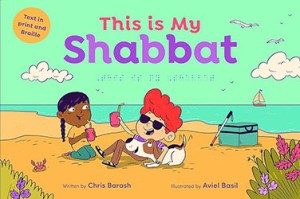What would synagogue attendance be like for a child without the venerable institution of the highly respected candy man (or sometimes candy woman)? The candy man is a fixture in many synagogues, and everyone seems to know who he is and that his pockets are filled with delicious treats that he loves to distribute. The candy man sweetens the synagogue experience for the community’s children and is esteemed by all.
In The Candy Man Mystery, Mr. Sharansky, the candy man at Josh’s synagogue, also told silly jokes, taught the children words in his native Russian, helped the adults build the sukkah, participated in kitchen duties, and worked in the gift shop. Everyone loved Mr. Sharansky! One day Mr. Sharansky was nowhere to be found. Josh and his sister, Becky, searched everywhere. They asked the cantor if she knew where he was, but she had no idea. They asked the leader of the junior congregation, who was teaching the younger children to sign the Shema in American Sign Language, but she didn’t know either. A group of Mr. Sharansky’s pals were also in the dark about the whereabouts of their friend. The rabbi, when asked, was the only one who knew that Mr. Sharansky had been taken ill. The children and their parents, performing the important mitzvah of bikur cholim, visiting the sick, went to visit their dear friend in the hospital after services. Knowing how sad Mr. Sharansky had been to miss services, the children sang the Adon Olam right in his hospital room, and then Josh reached into his pocket and gave Mr. Sharansky a piece of candy he had been saving to sweeten the day of his elderly friend.
This is a story filled with heart, with joy, and with the love of good deeds. A kind, generous gentleman who spent his days making people happy was treated to the same warmth and caring he regularly showed others. The values of giving, visiting the sick, community service, and inclusion are highlighted, providing myriad gentle lessons for the reader to absorb. The color illustrations feature sweet faces and the bustle of an active community. Back matter includes the words of the Shema in English and Hebrew, a glossary of terms, and the American Sign Language instructions for signing the Shema.
This story is even sweeter than the candy for which it is named.
Michal Hoschander Malen is the editor of Jewish Book Council’s young adult and children’s book reviews. A former librarian, she has lectured on topics relating to literacy, run book clubs, and loves to read aloud to her grandchildren.





